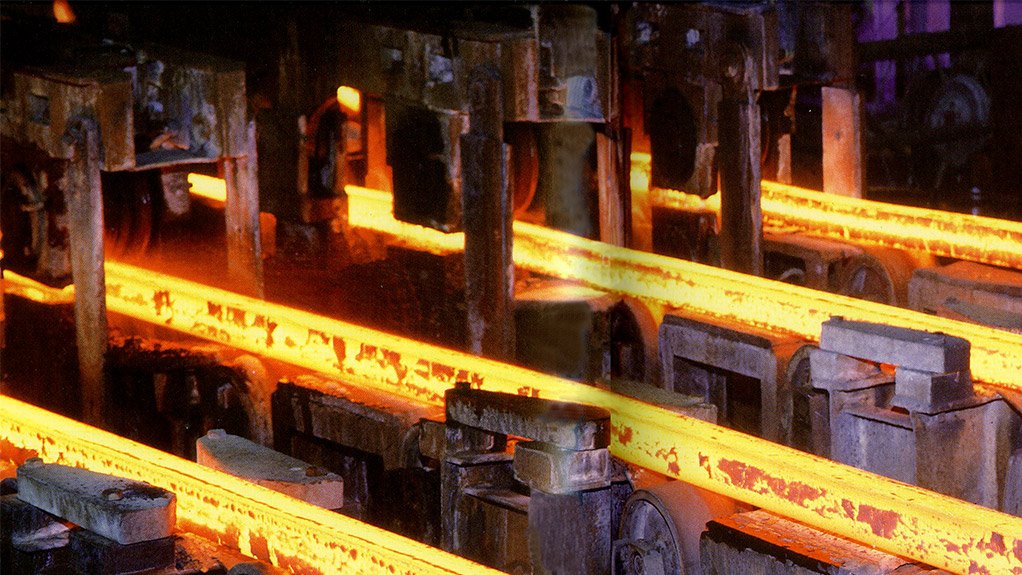The long-awaited stipulation that domestic steel, as well as locally made steel products and components, be used in public-sector construction projects has been welcomed by South Africa’s leading steel producer, as well as by the Southern African Institute of Steel Construction (SAISC).
It is the culmination of a long journey, which began more than two years ago, when the domestic steel industry entered a deep period of crisis, as a result of falling global steel demand, which led to a flood of cheap imports.
The instruction note, published by the National Treasury in the Government Gazette in line with the Preferential Procurement Regulations of 2011, which allow for such ‘designations’, will come into force on February 1.
The note instructs accounting officers to specify 100% local content for value-added steel products such as fabricated structural steel (including such products as columns and beams), joining components, frames, roof cladding, vertical cladding, wire products, fasteners, ducting and structural pipework, gutters, downpipe and launders.
In addition, a minimum local content threshold of 100% is specified for primary steel products such as plate, sheets, galvanised and colour coated coils, wire rod and drawn wire, sections and reinforcing bars.
The designations were confirmed following intensive lobbying, by ArcelorMittal South Africa (AMSA), of the Department of Trade and Industry and the Economic Development Department. As part of a survival strategy unveiled in 2015, AMSA, then led by Paul O’Flaherty, began calling for designation of local steel and tariff protection, while offering a new pricing formula for flat steel, together with the promises of greater transformation and a commitment to retaining jobs, in return.
Government had already started designating other products – everything from power pylons and rail rolling stock to uniforms and canned food – for local procurement. However, it had specifically excluded steel, owing partly to ongoing animosity over AMSA’s pricing policy, which was based on import-parity pricing. In fact, for the purposes of the local-content calculations for those steel-bearing products already designated, imported steel was “deemed” local. Therefore, the National Treasury had to effectively “undeem” imported steel as local to open the way for the designation of construction steel.
SAISC CEO Paolo Trinchero described the designation of fabricated structural steel as “great news”, while AMSA CEO Wim de Klerk suggested it could resuscitate “the entire industry”.
“The key building and construction sector typically accounts for one-third of all steel consumption and the designation of local steel content for State infrastructural projects at 100% minimum threshold will assist in diverting import orders back to local manufacturers and producers and strengthening the South African steel sector,” De Klerk said.
AMSA argued, too, that the timing of the designations was “opportune” in light of its recent agreement with Evraz Highveld Steel and Vanadium, to inputs for processing into heavy structural steel in Highveld’s Mpumalanga mill.
Under the proposed arrangement, AMSA will supply blooms and slabs, primarily from Newcastle and Vanderbijlpark, for processing into heavy structural products used in the construction and infrastructure markets.
De Klerk recently indicated that resumption of production was dependent on the implementation of the 10% bound rate import duty on the products to be manufactured at the eMalahleni facility.
The International Trade Administration Commission of South Africa (Itac) has already approved 10% base protection for the products in question, but has refrained from implementing the duties, owing to the absence of a domestic manufacturer.
Itac says the duty will be deferred until such time that manufacturing of structural steel resumes in the Southern African Customs Union region. “Once manufacturing resumes the commission will convey its recommendation to the Minister on the implementation of the duty on structural steel.”
Edited by: Creamer Media Reporter
EMAIL THIS ARTICLE SAVE THIS ARTICLE
ARTICLE ENQUIRY
To subscribe email subscriptions@creamermedia.co.za or click here
To advertise email advertising@creamermedia.co.za or click here













